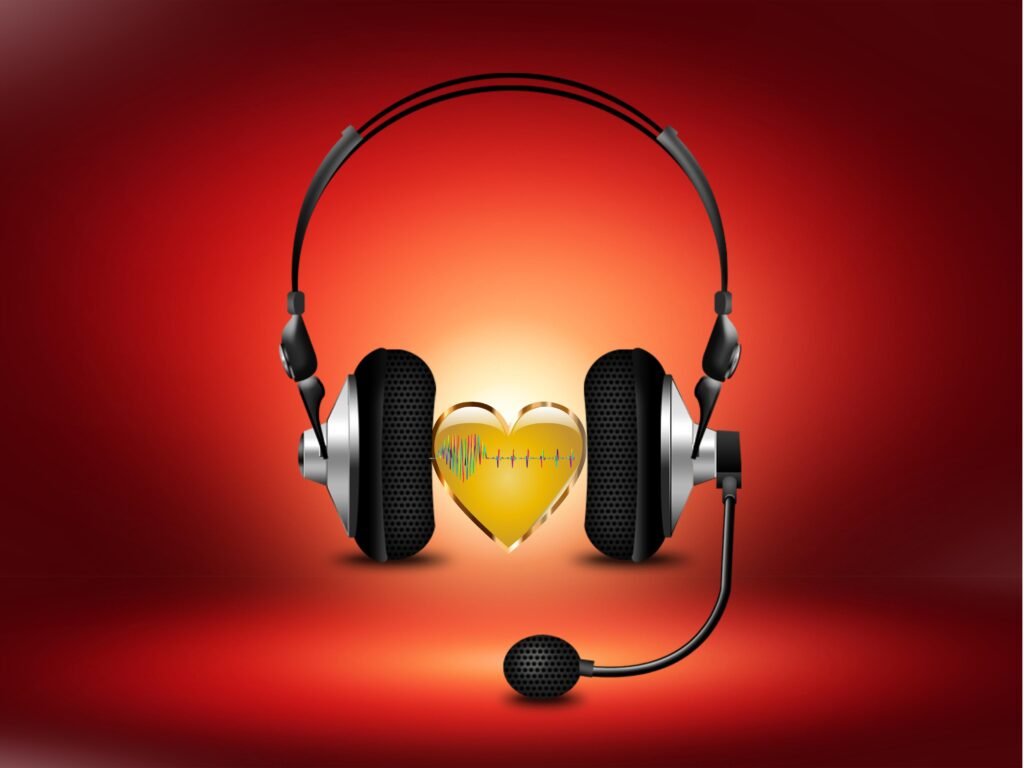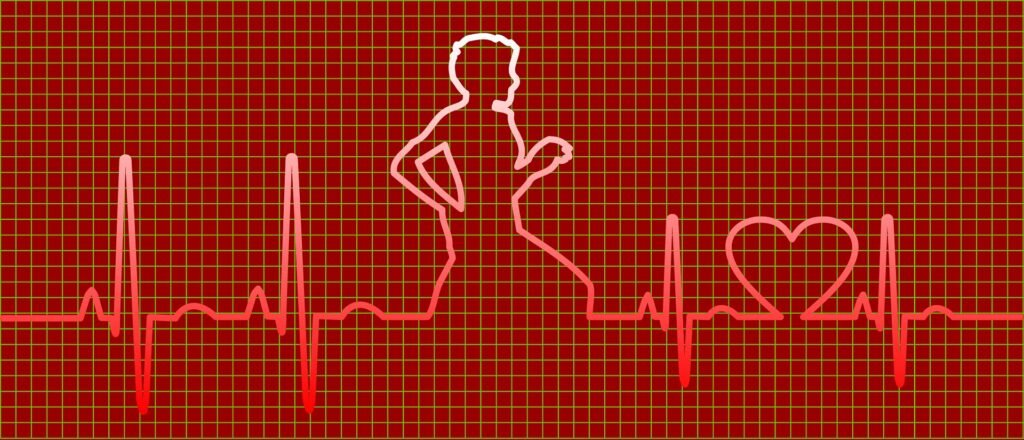Heart Sounds
Introduction :-

Heart Sounds- Heart sounds are sounds produced via way of means of the mechanical interest of the coronary heart throughout every cardiac cycle. Heart sounds are produced via way of means of:
1. Blood go with the drift via the coronary heart chambers
2. Contraction of the coronary heart muscle mass
3. Closing of the coronary heart valves. Examination of heart murmurs has important diagnostic value in clinical practice, since changes in heart murmurs indicate cardiac diseases involving the heart valves. Heart murmurs can be heard by placing an ear to the chest of the patient or using a stethoscope or microphone. These sounds are also recorded graphically.
Types of Heart Sounds :-
Using a stethoscope, one may detect the first and second heart sounds, often known as the classic heart sounds. The spoken words “LUB” (or LUBB) and “DUBB” (or DUP) are more similar to these two noises, which are more noticeable. Under normal circumstances, the third heart sound is too quiet to be detected with a stethoscope. However, it can be heard with a microphone. The fourth heart sound is the, an inaudible sound. It becomes audible only under pathological conditions. This sound is inspected only by graphical registration.
Every cardiac cycle produces four different heart sounds:
1. First heart sounds
2. Second heart sounds
3. Third heart sounds
4. The fourth heartbeat(fourth Heart Sounds)

First Heart Sounds (S1) :-
Early in the ejection phase and during isometric systole, the first heart sound is produced.
Cause: The abrupt synchronous (simultaneous) closing of the atrioventricular valves is the main reason for the first heart sound. But there are additional elements at work as well.
Features: A long, gentle, deep sound is the initial heart sound. It’s similar to the way people say “LUBB.” This tone lasts between 0.10 and 0.17 seconds. It runs between 25 and 45 cycles per second.
ECG: The peak of the “R” wave on the ECG corresponds with the first heart sound.
Physiological Factors Affecting First Heart Sounds :-
1. Valve Integrity and Function: Healthy, mobile valves with good structural integrity produce a crisper, more distinct S1. Disorders including constriction of the mitral valve, or mitral stenosis, can impact the timing and force of S1.
2. Ventricular Pressure: The pressure gradient between the atria and ventricles at the time of valve closure affects the sound. Higher ventricular pressure may make the S1 sound louder. Rapid ventricular contractions may increase the intensity of S1.
3. Heart Rate: A higher heart rate may make the S1 sound louder because of the increased force of ventricular contractions. Conversely, a very slow heart rate may make the S1 sound quieter.
4. Blood Volume and Flow: An increase in blood volume in the ventricles, as seen in conditions such as hypervolemia, can increase S1. Conversely, a decrease in ventricular filling (such as hypovolemia) can soften S1.
Second Heart Sounds (S2) :-
The final heartbeat produces the second heart sound. prediastolic period.
Cause: The second heart sound is caused by the sudden closure of the pocket flap.
Characteristics: The second heart sound is a short, sharp, high-pitched sound. It sounds like the word “DUBB” when uttered (or DUP). the second heart sound lasts from 0.10 to 0.14 seconds. Its frequency is 50 cycles per second.
ECG – The second heart sound coincides with the T wave on the ECG. In some cases, it precedes the T wave, and in other cases, it begins after the peak of the T wave.
Physiological Factors Affecting Second Heart Sounds :-
1. Valve Integrity and Function: Healthy, mobile pocket valves with good structural integrity produce a clearer, more distinct S2. Conditions such as aortic or pulmonary stenosis (pocket valve stenosis) can affect the strength and timing of S2.
2. Pressure Gradient: Sound is affected by the pressure differential that occurs as the valves close between the ventricle and the major arteries (pulmonary artery and aorta). S2 may rise with higher arterial pressure, particularly the component that closes the aortic valve.
3. Respiration: Aortic and pulmonary valve closure are the two physiological divisions of S2, with the latter typically taking place right after aortic valve closure. During inspiration, negative intrathoracic pressure increases venous return to the right side of the heart, delaying pulmonary valve closure and causing a more severe rupture.
With exhalation, the division becomes less noticeable or may even disappear.
4. Heart rate: A faster heart rate shortens the interval between the closing of the aortic valve and the closing of the pulmonary valve, making the cleft less noticeable. Conversely, a slower heart rate may increase the perception of the cleft.
Third Heart Sounds (S3) :-
The third heart sound is a low-pitched sound produced during the rapid filling phase of the cardiac cycle. It is also called the ventricular gallop or early diastolic gallop because it is produced early in diastole. The third heart sound is usually not audible with a stethoscope, only with a microphone.
Cause: The third heart sound is caused by the inflow of blood into the ventricles and the vibration of the ventricular walls as they rapidly fill with blood. It can also be caused by the vibration of the adrenal membrane.
Characteristics – The third heart sound is short and deep. The duration of this tone is 0.07 to 0.10 seconds. Its frequency is 1 to 6 cycles per second.
Physiological Factors Affecting Third Heart Sounds :-
Ventricular Compliance: The presence of S3 is often associated with decreased ventricular compliance (stiffness) or increased filling pressures. Conditions such as heart failure, dilated cardiomyopathy, and volume overload states can decrease ventricular compliance and lead to S3.
Age: Age: Due to the more cooperative ventricles in children and young adults, S3 may be normal. In individuals over 40 years of age, S3 usually indicates a pathological change in ventricular function.
Hemodynamics: Increased blood volume or rapid ventricular filling can potentiate S3. Hypertensive states such as anemia, thyrotoxicosis, and pregnancy can also cause S3 by increasing blood flow and filling pressures.
Fourth Heart Sounds (S4) :-
The fourth heart sound is usually an inaudible murmur. It is only audible in abnormal circumstances. He is limited to performing via graphic recording. By phonocardiography. This murmur occurs during atrial systole (late diastole) and is considered a physiological atrial murmur. Another name for it is a presystolic or atrial gallop.
Cause – The fourth heart sound is produced by the contraction of the atrial muscle, which causes vibrations in the atrial muscle and atrioventricular valves during systole. It is also due to vibrations in the ventricular myocardium caused by the expansion of the ventricles during atrial systole.
Characteristics – The fourth heart sound is a short, low-pitched sound. The duration of this tone is 0.02 to 0.04 seconds. Its frequency is 1 to 4 cycles per second.
Physiological Factors Affecting Fourth Heart Sounds :-
The fourth heart sound can be heard with a stethoscope when the ventricles become stiff. Ventricular stiffness occurs in conditions such as ventricular hypertrophy, long-standing hypertension, and aortic stenosis. To overcome the ventricular stiffness, the atria contract forcefully, producing an audible fourth heart sound. If a fourth heart sound can be heard with a stethoscope, this condition is called a third heart sound. This sound is usually best heard with the patient in the supine position or with left hemiplegia, with the bell mouth of the stethoscope placed over the apical region.
ECG: The fourth heart sound occurs at the same time as the “P” wave ends and the “Q” wave starts.
